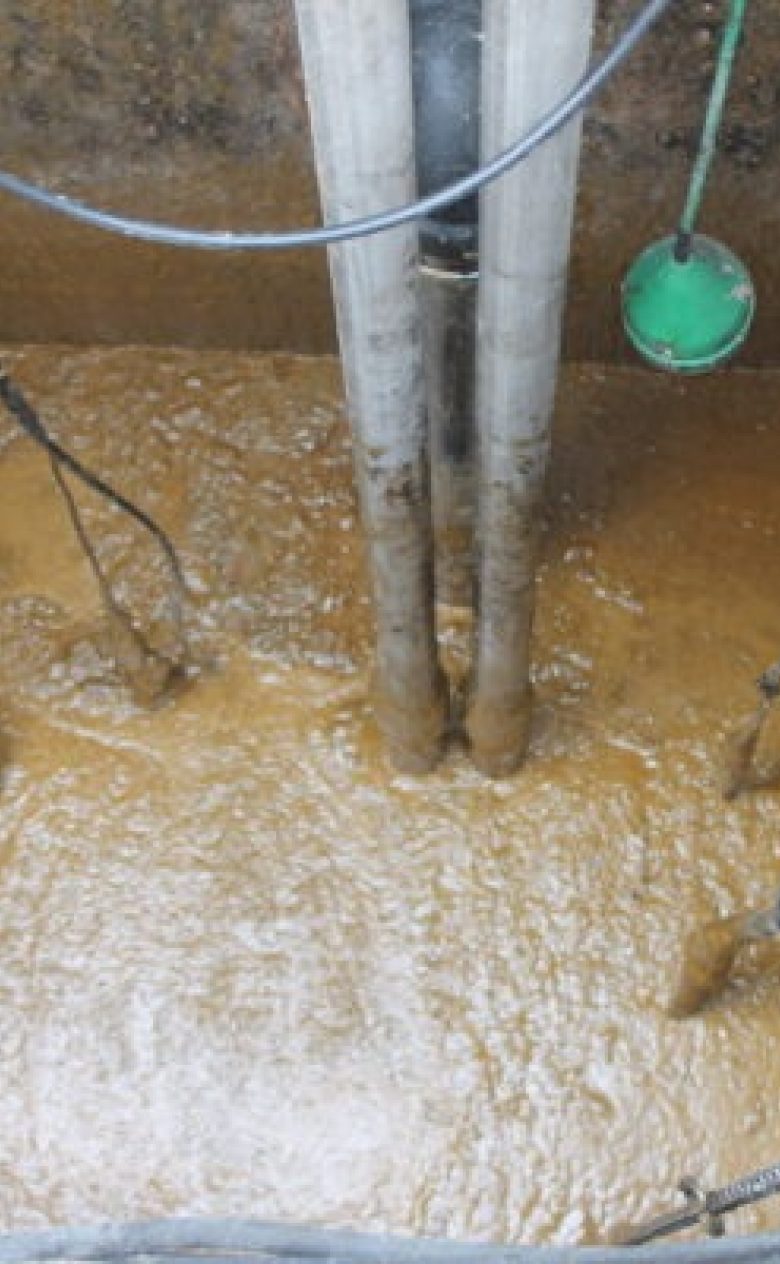FATracker: a new monitoring tool for wastewater pumping stations
The accumulation of floating deposits of fat, oil and grease (FOG) causes pump sump failure in many wastewater drainage systems. The configuration of pumping stations hampers the transportation of floating debris (such as oils or plastics), which accumulates on the surface of the sump.

Furthermore, FOG layers often undergo physicochemical transformations (saponification, for example) which lead to thick (up to meters) and hard (hard-soap consistency) floating layers. Over time, these layers cause pump blockages and lead to wastewater discharges and damage to infrastructure.
On the other hand, the removal of these deposits represents both a health hazard for the personnel involved and a significant operational cost. Unfortunately, knowledge or data on the dynamics of FOG in pump sumps is still lacking in both the scientific literature and international technical codes and this represents an obstacle to the design of mitigation alternatives for FOG-layer accumulation.
FATracker: a new monitoring tool
In this study, Deltares and Ingenieursbureau Rotterdam teamed up in a TKI project to design a new monitoring tool for FOG-layer dynamics in wastewater pumping stations. We developed a camera system, called FATracker that can process high-frequency (seconds), long-term (months), pump sump imagery for the detection of floating debris. We built and trained a deep-learning algorithm capable of detecting the extent of FOG layers and therefore the effortless processing of large amounts of imagery.
A dataset covering almost one year with a frequency of 2 minutes has been collected so far in a pumping station in Rotterdam with severe FOG accumulation problems. This constitutes the first high-frequency FOG-layer dynamic dataset and it is being used to study the effect of operational rules in the transport of the floating layer and accumulation patterns.
Sump images can also help to monitor real-time surface-velocity fields, surface vortices, and the extent of FOG cover, which are useful variables for pumping station operators. Future efforts will be dedicated to increasing the number of monitored catchments so that general knowledge about FOG build-up patterns can be derived, allowing for the design and testing of mitigation strategies.
You have not yet indicated whether you want to accept or reject cookies. This means that this element cannot be displayed.
Or go directly to:
The video shows a dataset of fat, oil and grease (FOG) layer dynamics in a wastewater pumping station in Rotterdam, The Netherlands. Top-view imagery from the station was processed by a deep-learning semantic-segmentation routine for the detection of FOG and water surfaces. The ratio of FOG/water extent in the image is displayed below, together with rainfall intensity, measured water level, pump sump inflow and pump activation pattern.
The FATracker system is a scalable camera and microcomputer tool capable of in-situ (Edge-AI) processing of computer-vision routines. This allows for the deployment of optical deep-learning-based monitoring solutions in remote areas where data transfer is limited since processed data alone can be transferred instead of highresolution raw video/imagery. This will allow optical-based solutions to be applied to monitor emerging bio-hazards in water bodies such as floating vegetation, algal blooms, or plastic detection.
The research has been carried out as a TKI water technology project (Dutch ministry of Economic Affairs and Climate policy) between Deltares and Ingenieursbureau Rotterdam from the municipality of Rotterdam.

